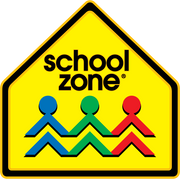With at-a-glance time displays on every cell phone and e-device, will today's kids learn to "tell" time? And if they don't, will it matter? It's a bit like when parents feared that Velcro straps on shoes would delay—or even prevent—kids from learning to tie shoelaces. Most kids do learn to tie their shoes, and most will learn to read analog clocks. Does it matter? Yes.
Out of date or timeless?
Centuries before Tik-Tok, there was tick-tock. According to Mary Bellis, writing for Thought Co., the first person reported to wear a watch on his wrist (tied on with a string) was French mathematician and philosopher Blaise Pascal in the 1600s and the first mechanical alarm clock came on the scene in 1787. And a recent analog clock review by Ashley Britten for the Chicago Tribune, reminds us that 'The standard white wall clock with black numbers and black outline has been a school and office staple for decades."
Yet in 2019 the Today Show reported on a Jimmy Kimmel Live! Segment called Can You Do It? in which "a group of teens and college students found themselves looking at an analog clock like it was an artifact from Mars while attempting to decipher the time."
To sum it up, the Today report said, "The results weren't pretty." The report concluded that "All signs are pointing toward time running out for analog clocks."
Reading analog clock time develops multiple skills
However, in February of this year, in a guest blog for ADDitude, a website about attention deficit disorder, Mareen Dennis, MS, LPP, writes that "Time blindness, or a lack of awareness of the passage of time, is a common difficulty among many people with ADHD." She says that "people with ADHD need to literally 'see' time," and for that shed recommends analog clocks.
But what about kids (and adults) without ADHD? Internet "commentators" weigh in with myriad opinions. After all, digital clocks are pretty much everywhere, and reading analog time is a fairly complex skill learned in stages, traditionally between kindergarten and second grade. It involves being able to count to 60 (for minutes in an hour), recognize fractions of an hour (quarter after), and correlate fractions to whole numbers, which at a glance, can appear abstract or unrelated (e.g. big hand on the 1 means 5 after), meaning each number has two separate meanings.
Regarding kids learning analog clock time, the Chicago Tribune clock review says that "Learning to tell time helps children improve their mathematical, cognitive and even motor skills. Despite the prevalence of digital clocks on children's devices, this skill is important for them to have."
Also this past February, Dedham Country Day School, a private school established in 1903 under a different name, in Dedham, MA, posted "10 Reasons Why It's Important to Teach Second Graders How to Read an Analog Clock," and they are excellent.
Among them are "Analog clock help children understand that subtraction is not just 'taking away', it is also the 'difference between two numbers," "skip counting is the natural precursor to multiplication, and counting by fives is a natural skill that has a useful context when telling time," and "The numbers on a clock stand for two things and children should develop the flexibility to move between them."
Put the gift of time in kids' hands
In a blog post on calendar.com, Kayla Sloan offers suggestions for "How to Teach Kids the Value of Time."She suggests giving preschoolers 10 minutes to pick up their room or change their clothes, noting that until they "understand the passing of time, deadlines won't mean as much."Once kids are a little older, she suggests first introducing analog clocks and then digital. She says, "To gain a better understanding of the value of time, teach kids through doing. Set start and end times on a clock for homework or simple household chores."
Telling Time Flash Cards app for Android joins analog and digital. Not only do the cards show analog time on one side - tap to hear it - and digital on the other, but move the hour and minute hands of the cuckoo clock to set the time correctly, and you'll get a surprise. Both the flash cards and the game have Easy and Hard levels of play. The Easy level uses hour and half-hour times, while Hard includes quarter-hour and five-minute increments. With Time & Money Flash Cards, kids get to practice telling time and counting change! Another resource for sharpening multiple skills is the 64-page Time, Money & Fractions Workbook with perforated, tear-out pages that make great individual worksheets.


The Anywhere Teacher online learning system for ages 2-8, includes games, flash cards, and interactive worksheets for practicing telling time.












